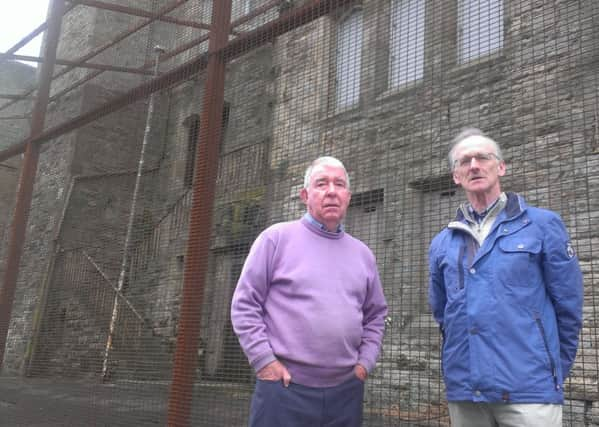Battle to save iconic Dungannon landmark haunted by grisly ghost of the '˜Black Sergeant'


While Dungannon Council has splashed out millions transforming the Hill of the O’Neill into a major tourist attraction, the former Royal Irish Constabulary Barracks in Market Square has been allowed to fall victim to neglect and the weather.
Local historian Brendan Duffy, one of the conservationists behind the appeal, said it was a mystery why the building was being ignored.
Advertisement
Hide AdAdvertisement
Hide AdThe unusual design of the barracks has dominated the town skyline and puzzled visitors ever since it was built in 1871, shortly after the Fenian Rising.


Designed by architect James Higgens Owen, who was renowned for his daring and flamboyance, the building owes its castle-like appearance to his attempt to combine it as a defensive post and police barracks while incorporating elements of the Scottish Baronial style.
It is described in police archives as the barracks that strayed 5000 miles and for the past 140 years the people of Dungannon believed that the old Constabulary barracks was destined for India.
The story goes that the plans were mixed up with those of a barracks that was supposed to be built in the Khyber Pass, which got in its stead a whitewashed, slate roofed, wooden-shuttered country police station with a fireplace.
Advertisement
Hide AdAdvertisement
Hide AdJames Owen, in fact, drew the plans for the two police stations, and the other one was built in Cahersiveen, County Kerry.


The four-storey listed building has a gabled tower, gabled wings with crow stepped gables, and a turret.
It was closed in 1982 with the opening of the new police station in Dungannon in 1982.
Historian Aidan Fee, who is appealing to the council to do whatever it can to help save the building, said: “From an architectural and historical point of view, it just appears incredibly negligent to allow this listed building to slowly deteriorate, especially when it is face to face with such a shining new development as the Hill of the O’Neill and Ranfurly House.
Advertisement
Hide AdAdvertisement
Hide Ad“After all, it is the most substantial part of the development on the hill, greater than the remnants of the towers.
“It is part of the shared history of the town, and can’t be overlooked since the tourist trail on the hill takes you right up to it and all you can see is this pit of dilapidation at the back of the building, and at the front, a rusted wire cage blocking off the building.
“It is featured heavily on the Mid Ulster heritage trail, with a romanticised and very attractive picture of the building, but when you arrive at it, the reality is much more grim.”
The two historians, who belong to Mid Ulster Council History Forum, said the building should be restored and opened to the public perhaps as some sort of commercial venture.
Advertisement
Hide AdAdvertisement
Hide Ad“The building has a great deal of history”, said Brendan. “For instance, there is the story of the so-called Black Sergeant, who was stationed at the barracks and tried for a gruesome murder in the late 1800s. He was found guilty and hung here, and the legend goes that he now haunts the place. I am sure that many readers will have their own memories of the building, and I ask them to send them in so that they can be collected.”